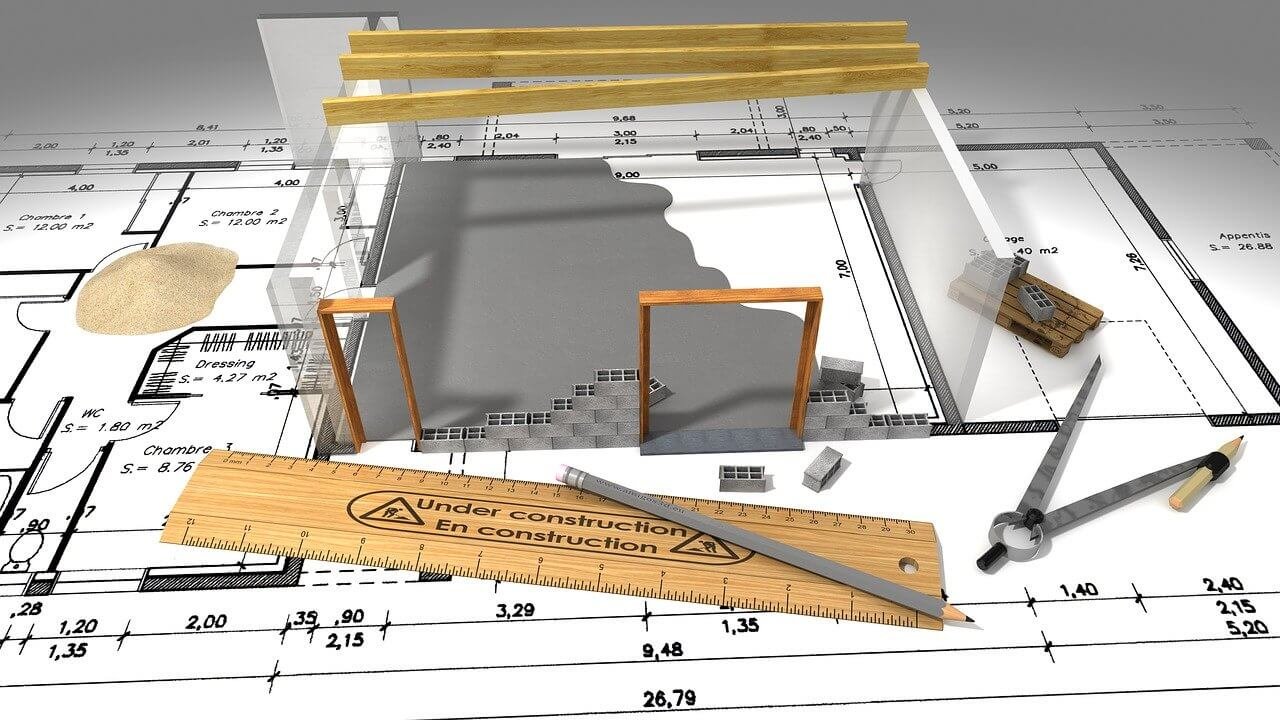Being an important issue globally, climate change has been a dramatic change emerging drastically. Hence, it is important to practice sustainability in each and every form possible. It has also become one of the most fundamental design problems of our time where the burden of new constructions are causing problems.
Whether the North Pole, South Pole deserts or cities, these regions are well versed with specified resources. Buildings are an important part that stock culprit when compared to automobiles. Every Architect and designer should know about what impact he is causing by selecting building materials that harm the environment. On the other hand, it is also true that architects and builders are increasingly adapting to design and create structures that have less impact on the natural environment.
Climate responsive architecture will have a positive effect is when the design and structure both are directly proportional to the local microclimate and environment of that place. Building materials manufacturing itself produces carbon dioxide (CO2) – by burning fossil fuels like oil, gas and coal, cement production, etc. The concentration of CO2 has been increasing ever since the industrial age and the impact is unbelievable.

The Planet is at Stake:
What is the use of building new structures or new projects when it cannot save the lives of inhabitants in crises? A house is built so that it protects people from sun, rain and cold, instead people leave their homes and run away to go the safer locations. Rising temperatures are contributing to record heat waves and droughts, rising sea levels, intense storms, wildfires, and floods with extreme conditions that can be seen across the globe.
Architecture in these extremely sensitive locations shall compliment the existing microclimate and supplement the environment by conserving the ecological food chain biodiversity.
“The Earth’s biota is entering its sixth ‘mass extinction’ and the current rates are far above the previous mass extinctions.”

Therefore, validating us to give more importance to what we are building and what is our sustainable contribution towards global climate change. Even if by any chance, humanity was to immediately stop releasing CO2, the climate would continue to change because of the greenhouse gases that have already dumped into the atmosphere.
The best way to achieve a step towards ecology is to practice mitigation with resilient development in order to minimize harmful emissions and adverse effects
Imagine, what if we don’t CO2 emissions? The adverse effects will be, by the end of the century – a hurricane Sandy-level flood, higher temperatures for a long period of the year, submerged world-class cities, drought-prone cities water everywhere and no water to harvest. Such unimaginable catastrophic scenarios are not a hyperbole, but the consequences of what we have been practicing and what we are practicing.
A Step Closer to Mitigation:
In this era of rediscovery, architects and engineers have begun to practice their design efforts and indigenous responses to climate and its importance in terms of sustainability. Generating innovative technology-based forms using the power of sun, wind, rain for producing energy to power structures is a system of integration for sustainability.
Buildings should be interactive in terms of structural purpose and not of what people think about them- permanent!

A principal purpose of the building is to change with respect to the microclimate. As the microclimate on each side of the structure is different, the microclimate adjacent to the south side is also different from the north wall. A building’s envelope is an important mediator between the indoor and outdoor conditions where the building is constructed. The building should also utilize other factors like seasonality, the intensity of the sun, wind, rainfall and humidity factors.
True climate-responsive architecture does well beyond traditional practices- smart glazing systems, electrochromic glass controlling solar light and heat transfer, strategic building orientations and fenestration maximizing the ventilation for naturally lit interiors, etc.
Some basic steps for attaining Climate-Responsive Architecture:
The most important factors of design to be followed are at a macro scale and micro scale. Macroscale buildings that are energy efficient and reduce the dependence on fossil fuels, heating or cooling and use passive solar strategies for the reduction of CO2 emissions. At the microscale, architecture should accommodate extreme weather depending on the climate of that area.
- The layout of Building on the site: Determining weather conditions, climate, soil types, wind speed, and sun path, look for water flow, the geology of the site, etc. Factors like staying at least 100 feet away from any watershed, floodplain and away from a natural habitat with endangered species.
- Plan with the sun in Mind: Planning a structure based on the cardinal directions are suggested to gain the maximum amount of sun that heats interiors in winters and decreasing the amount of sun that heats the building in summer.
- Window Considerations: South facing facades shall utilize a size appropriate to its orientation, and glazing should utilize a double or triple-paned glass with low-E coating. Large fenestrations are suggested when the site is located in windy areas or at a height which will give rise to natural ventilation.
- Building for a geographic area: Building factors like insulation, vapor barriers, air barriers radically depending on the location of site – cold or snowy north, hot and humid south or the arid desert.
- Minimizing the building footprint: This questions the true need for spaces and building programs. And how will the building have less excavation costs and more wall area that can benefit the inhabits from solar warming effects and increase natural daylighting.
- Natural Ventilation: As the warm air tends to rise, a building can be cooled by stack ventilation. The rate at which the air moves is a function of the vertical distance between the inlets and outlets.
The advance in architecture are innumerable, these were some basic ideas which are easy to follow. Whatever strategy you use, or combination of strategies, for a given project, will vary according to a particular climate, site, location and other site conditions. Moving a step closer to integrating climate and weather with architecture will be of an advantage to stabilize the Earth.
To know more about Architecture Technology, Stay Tuned. Till then, you can visit the Security Awareness Section for day-to-day cyberattacks and how to prevent them.



